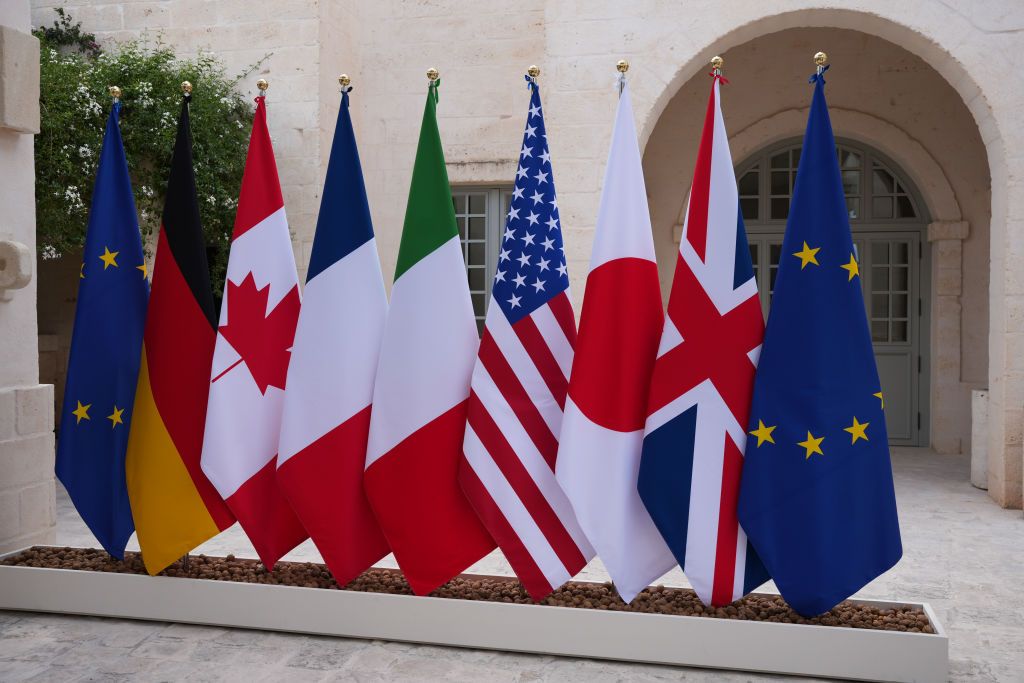The Group of Seven (G7) has agreed to provide Ukraine with about $50 billion in loans backed by revenue from foreign Russian assets. This decision was announced on Oct. 25, with plans to start disbursing the funds by the end of the year. The funds will support Ukraine’s economic, defense, and reconstruction needs. Western countries have frozen $300 billion in Russian assets, but only have access to the annual income generated by these funds, approximately $3.2 billion. The majority of the assets are frozen in European countries and will back the $50-billion loan to Kyiv.
During the G7 summit in Italy in June, leaders publicly confirmed their agreement to provide Ukraine with the $50 billion loan. The plan has now been finalized in October, with a consensus on how to deliver the funds through Extraordinary Revenue Acceleration (ERA) loans. These loans will be serviced and repaid by future flows of extraordinary revenues from the immobilization of Russian Sovereign Assets in accordance with G7 respective legal systems and international law. President Volodymyr Zelensky had called on G7 leaders to back the $50-billion plan and also proposed creating a mechanism for the full confiscation of $300 billion in frozen Russian funds.
Media reports on Oct. 22 indicated that the G7 intends to keep the Russian assets immobilized even after the war against Ukraine ends. Ukraine has expressed that it has the knowledge and capabilities to produce more drones and missiles for strikes deep into Russia, and all it needs is financial backing from Western allies. Alexander Kamyshin, an advisor to President Zelensky, stated that Ukraine has the necessary expertise and resources in place. The country seeks financial assistance to scale up its production of drones and missiles for operations against Russia.
The $50 billion in loans to Ukraine is a significant step towards providing the country with the financial support it needs to address its economic, defense, and reconstruction challenges. The funds will be backed by revenue from frozen Russian assets, with plans to start disbursing the money by the end of the year. The G7’s decision to immobilize Russian assets even after the conflict ends demonstrates their commitment to holding Russia accountable for its actions. Additionally, Ukraine’s expertise in drone and missile production presents an opportunity for the country to enhance its military capabilities with the support of Western allies.
Overall, the G7’s agreement to provide Ukraine with financial assistance and support for drone and missile production demonstrates a united front in aiding the country in its time of need. The $50 billion loan backed by revenue from frozen Russian assets will help Ukraine address its economic challenges and bolster its defense capabilities. The commitment to keeping Russian assets immobilized underscores the international community’s stance against Russia’s actions. With the necessary resources and expertise in place, Ukraine is poised to enhance its military capabilities and conduct deep strikes into Russia with the financial backing of Western allies.


